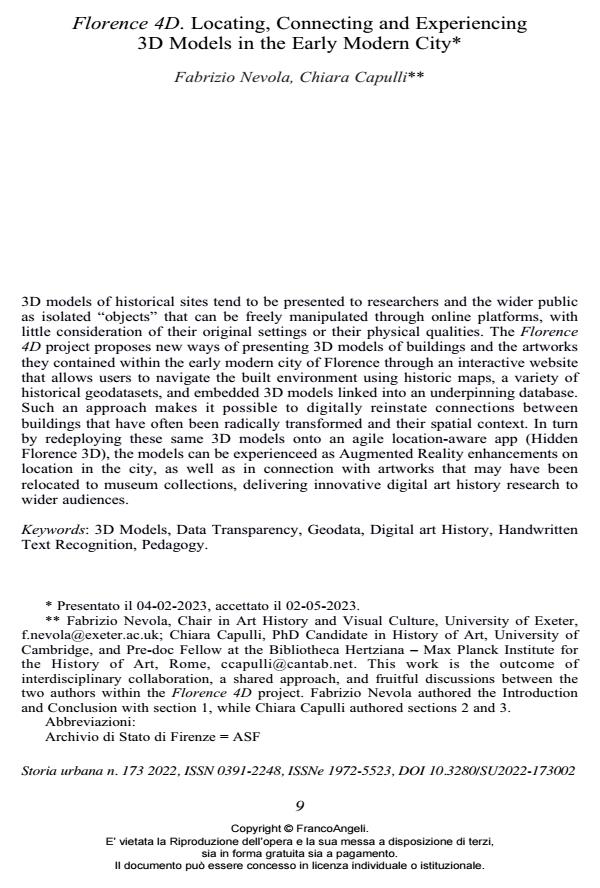Florence 4D. Locating, Connecting and Experiencing 3D Models in the Early Modern City
Journal title STORIA URBANA
Author/s Fabrizio Nevola, Chiara Capulli
Publishing Year 2024 Issue 2022/173
Language English Pages 21 P. 9-29 File size 508 KB
DOI 10.3280/SU2022-173002
DOI is like a bar code for intellectual property: to have more infomation
click here
Below, you can see the article first page
If you want to buy this article in PDF format, you can do it, following the instructions to buy download credits

FrancoAngeli is member of Publishers International Linking Association, Inc (PILA), a not-for-profit association which run the CrossRef service enabling links to and from online scholarly content.
3D models of historical sites tend to be presented to researchers and the wider public as isolated “objects” that can be freely manipulated through online platforms, with little consideration of their original settings or their physical qualities. The Florence 4D project proposes new ways of presenting 3D models of buildings and the artworks they contained within the early modern city of Florence through an interactive website that allows users to navigate the built environment using historic maps, a variety of historical geodatasets, and embedded 3D models linked into an underpinning database. Such an approach makes it possible to digitally reinstate connections between buildings that have often been radically transformed and their spatial context. In turn by redeploying these same 3D models onto an agile location-aware app (Hidden Florence 3D), the models can be experienceed as Augmented Reality enhancements on location in the city, as well as in connection with artworks that may have been relocated to museum collections, delivering innovative digital art history research to wider audiences.
Keywords: 3D Models, Data Transparency, Geodata, Digital art History, Handwritten Text Recognition, Pedagogy.
Fabrizio Nevola, Chiara Capulli, Florence 4D. Locating, Connecting and Experiencing 3D Models in the Early Modern City in "STORIA URBANA " 173/2022, pp 9-29, DOI: 10.3280/SU2022-173002